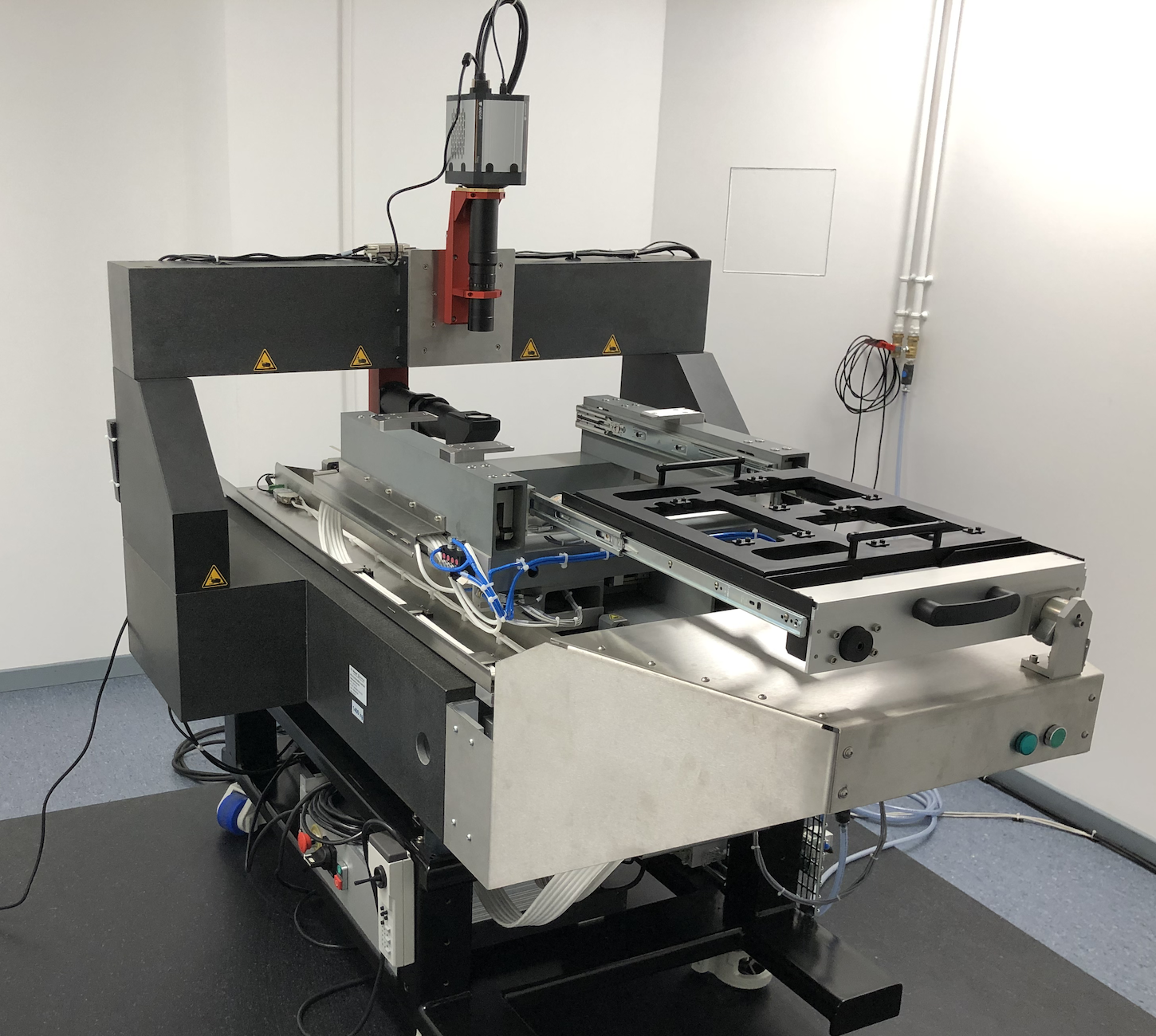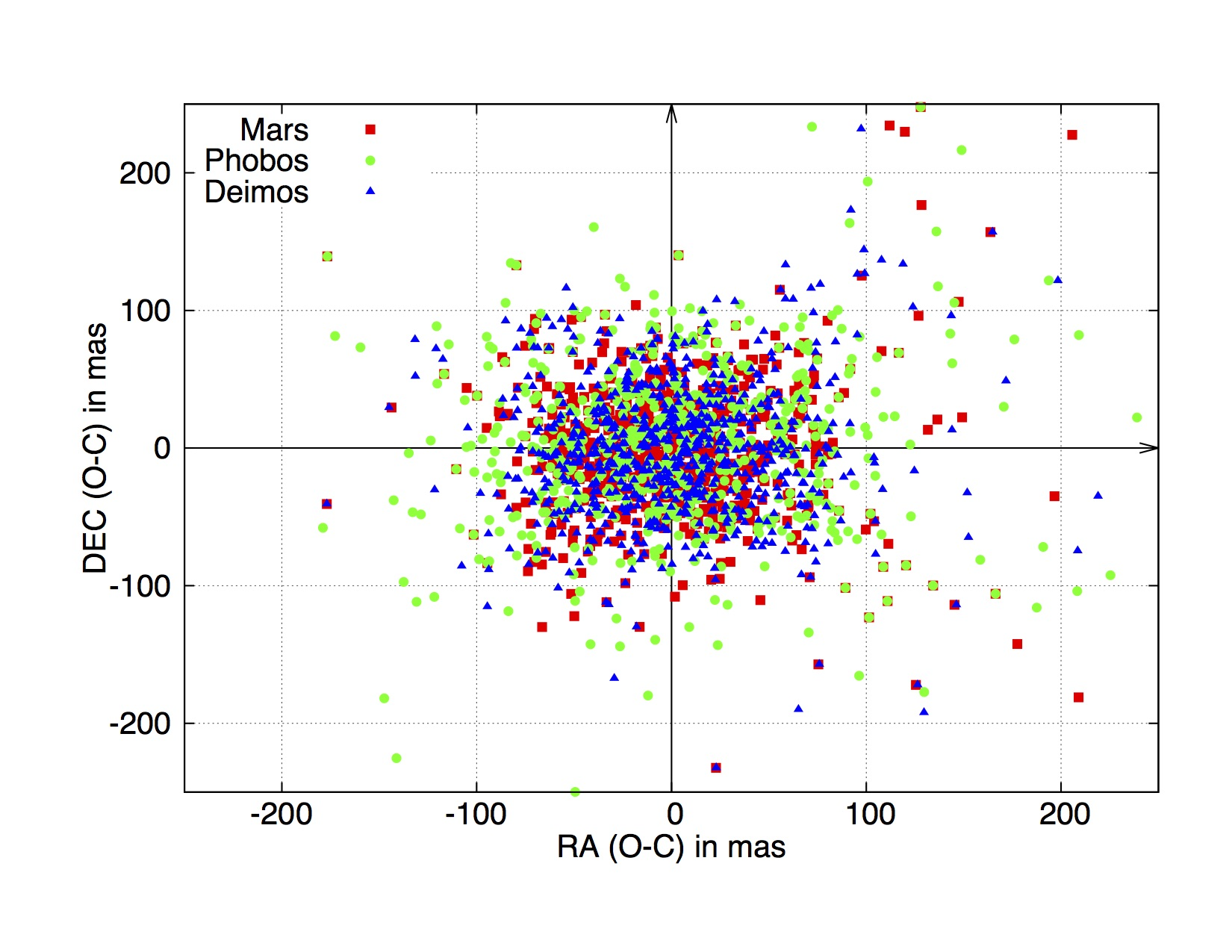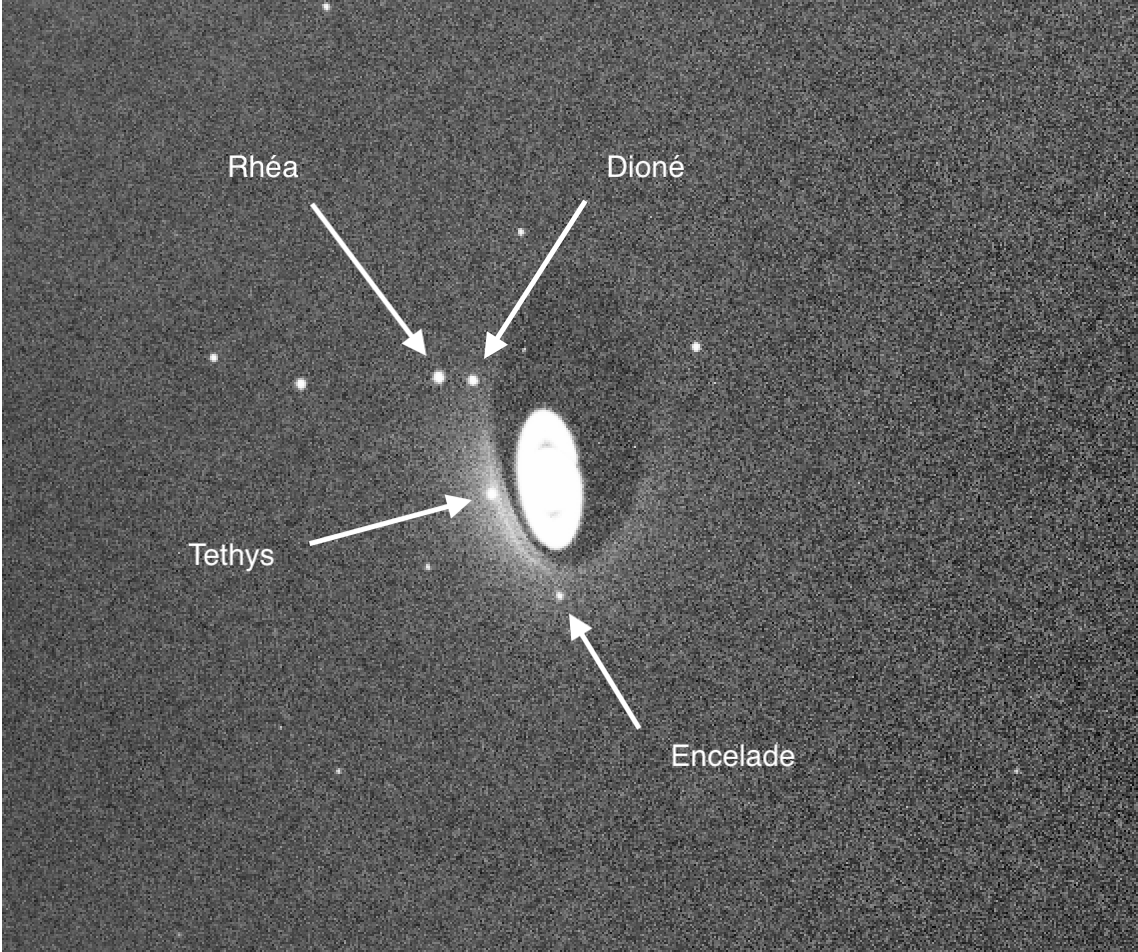Vincent Robert
Teacher-Researcher at IPSA, Researcher IMCCE/OBSPM under inter-institutional agreement, PEGASE team.
Currently Teacher-Researcher at IPSA since 2011, and Associate Researcher at IMCCE of Paris Observatory OBSPM, under inter-institutional agreement.
My researches are focusing on high-precision astrometry to improve the system dynamics, with a specialization for the sub-micrometric digitization of old astro-phographic plates: Natural satellites, Planets, Small bodies, and Stars. Head and PI of New Astrometric Reduction for Old Observations NAROO program.
Head of Space, Launchers and Satellites ELS course option at IPSA. Teachings in Space Mechanics, Astrometry, Fundamental Astronomy, and Satellite Design. Support of IPSA'ONE student Association. Elected member at the Administration Council (2013-2021). Elected member at the Monitoring Committee.
Member of SF2A French Astronomy and Astrophysics Society, of EAS European Astronomical Society, of AAS American Astronomical Society for Planetary and Dynamical divisions, of IAU International Astronomical Union for A, B, C, F and G divisions. Member of interdisciplinary Encelade and Encelade 2.0 Working Groups. Observer member of GAIA-FUN-SSO program.
Research
2006-2011: USNO Jupiter
PhD of Paris Observatory untitled "Astrometry of natural satellites: analysis of old observations to improve the dynamical parameters of planetary systems.".
Study in the framework of tripartite collaboration between IMCCE, U.S. Naval Observatory USNO, and Royal Observatory of Belgium ORB. Calibration of DAMIAN machine with scientific data. Analysis of 520 astro-photographic plates resulting in 1300 individual observations of Galilean satellites Io, Europa, Ganymede and Callisto, realized from 1967 to 1998. Development of a new method to analyze the images from the digitization to the calculation of positioning data, while correcting for instrumental effects to preserve the averaged positioning accuracy of 70 nm. Development of a new astrometric reduction method for a very few number of star references, while correcting for physical effects to preserve the averaged positioning accuracy of 1 mas.
Demonstration of the high potential of old astro-photographic plates: improvements in precision and accuracy of dynamical models, detection of very faint gravitational effects. Calculation of equatorial positions in right ascension and declination for the first time with these data, more accurate than more recent observation programs from ground.
2011-2013 : FP7 ESPaCE
Astrometry specialist: analysis of old astro-photographic plates of Mars, Jupiter and Saturn in the framework of the European FP7 ESPaCE project, under grant agreement n°263466. This poject aimed at strengthening collaborations and developments for new knowledges, technologies and products for the scientific community. The final products were ephemerides and reference systems for natural satellites and space probes. Calculation of new and high-accurate astrometric positions of planets and satellites to fit the most recent dynamical models.
For the complete set of the USNO Martian observations over the 1967-1998 period: 506 astro-photographic plates resulting in 2200 individual observations. Calculation of positioning data with an overall accuracy of 60 mas (18 km) in equatorial coordinates, while the former accuracy was 100 mas and only with relative coordinates. These results are among the best from ground (Robert et al., 2014, 2015). This is also a very important result because the accuracy is analog to that of first spacecraft MAriner 9 and Viking 1, 2. Demonstration that positioning informations derived from old photographic plates are sufficient, if the time span is large enough, to accurately fit a dynamical model, and to deduce physical interpretations and parameters such as the tidal dissipation.
For the complete set of the USNO Saturnian observations over the 1967-1997 period: 522 astro-photographic plates resulting in 1350 individual observations. Calculation of positioning data with an overall accuracy of 100 mas (700 km) in equatorial coordinates, while the former accuracy was 100 mas and only with relative coordinates. These results are among the best from ground (Robert et al., 2016). By comparison with the former analysis by Dan Pascu in 1994, demonstration of the high interest of an new analysis of old photographic plates, since the decline in precision for the positioning data has been very much improved. The method compared positioning data according to the satellite-titan magnitude in function of intersatellite residuals, as an indicator of the decline in precision of the main satellites. Demonstration that positioning informations derived from old photographic plates can be used to improve the precision and accuracy of dynamical models (Lainey et al. 2017).
2013-today: Observations and JUICE
Uranus and Neptune are not (currently) targets for space missions. However, I continue to observe these object systems at Haute-Provence observatory OHP with the T120 telescope, and Pic-du-Midi. I maintain an observational watch to constantly improve their dynamical models, and in anticipation of future missions in 10/20 years.
We answered a call with V. Lainey, related to the Jupiter Icy Moons Explorer JUICE mission of ESA. The space probe should be launched in 2022. I continuously observe the Jovian system at OHP with the T120 telescope and the remote IRIS instrument to constantly improve their dynamical models with recent data.
2013-today: GAIA-FUN-SSO
This program is a full part of the DU459 task of Gaia Data Processing DPAC consortium. The main goal is to coordinate ground observations with Gaia On-Board alerts. In other terms, is the telescop detects either an "unknown" object in its field of view, or a "critical" obects that needs a special attention (NEO, TNO...), the information is treated within the data processing system to be relayed to observatories. Thus, additional ground observations are needed to confirm new object detections and to facilitate their identification. Although, I am the observer of the very first Gaia confirmation in 2016 (see the ESA press release of January 24, 2017), and observer of eight other "new" objects identified as NEOs, too.
2013-today: NAROO project
Head and PI of this project initiated by the end of 2013 with a positive answer from a DIM-ACAV call: the New Astrometric Reduction of Old Observations NAROO project, now become NAROO "Program", with an official opening by mid-2020. It took almost 6 years to collect all needed funds, to convince the scientific and institutional partners, to draft all technical and planning documents, for installation and commissioning.The astrometric monitoring of Solar System objects is an important step to assess their formation and evolution. However, it is necessary to have very accurate observations over a large timespan to quantify relevant effects and thus, to improve dynamical models. In this framework, observations realized with "old" astro-photographic plates provide original, valuable and essential scientific data, that most recent technological means and computing tools can fully exploit. The NAROO program aims at selecting, measuring and (re-)reducing such observations for which an new analysis would provide new informations for the comprehension and the modelization of various systems: planets, natural satellites and asteroid in particular. We use the the new generation sub-micrometric digitizer at Paris Observatory, and Gaia star catalogs for the astrometric reduction, to reach the averaged positioning accuracy of 15 mas while the current one still ranges from 50 mas to 100 mas.
NAROO program
Context
Hundred thousands of photographic plates were realized from 1890 to 1998 in the french and foreign observatories, before their production was stopped to be gradually replaced by CCDs. This is a huge observational pool, especially since an only small part was analyzed with former tools, and the results were published and used for first dynamical models and physical validations. Some of these results are still in use: these are the evolutive observational data for which the time parameter is essential to detail the system evolutions. We here propose to "observe in the past", considering past observations realized over more than one century, from the end of the XIXth to the end of the 90's. By enlarging the sampling, we will allow to improve physical and dynamical modelizations of the bodies (Desmars et al. 2009, Lainey et al. 2017), and to suggest and/or validate evolution scenarios (Charnoz et al. 2011, Lainey et al. 2012, 2020). In terms of feasibility, it has been demonstrated that photographic plates are very durable (Hendriks 1983, Kodak 1989). We precognize "ideal" archiving conditions, but emulsions still remain entire and exploitable since the variations of temperature are not too quick, or if the environment relative humidity is not "extreme".
Objectives
The NAROO program aims at selecting, measuring and reducing old astro-phtographic plates(1890-1998) for which a new reduction would provide original and precious data for the understanding and evolution modelization of systems: natural satellites, asteroids, and comets, in particular. Fist works used UCAC reference star catalogs, and last studies demonstrated the high interest in digitizing plates (Robert 2011, Robert et al. 2011, 2014, 2015, 2016). However, the main justification of the program is the recent availability of Gaia star catalogs and their astrometric accuracy in positions and proper motions for star references (1 mas over one century). While former star catalogs did not allow to measure plates realized before the 60's due to their positioning accuracy, Gaia last releases definitely solve this issue. Thus, all old observations could now be analyzed with the best accuracy, making obsolete all published data. A non-exhaustive list of possibilities is: new astrometric positions of planets and satellites to improve ephemerides, pre-discoveries and new astrometric positions of asteroids, TNOs and NEOs, pre-discoveries and new astrometric positions of comets, analysis of variable Be stars... Fields of action are numerous, substantial and justify the technical needs of the project.
Installations
The astro-photographic plates and the quality of the expected results require a digitizer with specific instrumental design and accuracy (Robert 2011, Robert et al. 2011). The NAROO program is designed with such an instrument at Paris Observatory, Meudon site, that was built in France by the manufacturer Newport-Microcontrol. The machine is composed with a granite base of 1.5 tons, and with a 3 µm air-bearing XY-table. Plate holders are designed to support 350 mm wide plates. The positioning accuracy of the XY-table is controlled by Heidenhein encoders. The stability and repeatability are measured by the manufacturer at 10 nm. The instrument is placed in a thermal enclosure with stabilized temperature at 20°C ±0.1°C, overpressured room, and relative humidity regulation at 50% ±10% RH. This to overcome eventual structural deformations of the XY-table in particular. The XY assembly is completed by a Z-axis with a complete optical unit: Andor Neo SCMOS camera, telecentric objective 1:1 and LED illumination, designed by the Instrumental Pole of Paris Observatory.
The 2017/2019 activities relating to the "project" were mainly focused on the operations of fitting out facilities in Meudon, work preparation, execution and integration of instruments, last financial commitments from partners and preliminary works, phases of contracts and procurement, establishment machine room and installation of the instrument in a box, general work, final prospective with scientific partners, creation of a PSL Web space, NAROO organizational processes (Quality approach), integration of technical components with API and optics (illumination, camera), mechanical calibration, optical calibration.
On October 1, 2019, start of the final calibration phase, i.e. that aimed at automating the FITS mosaic image scanning and recomposition processes. In fact, the "project" became "program" in April 2019, with the "first light" NAROO.
By mid-2020, the center is fully operational. The first batches of scans are carried out on internal programs. The publication of the first call for projects for allocation of time to the community is postponed sine die .
On May 15, 2021, the first project call for time request 2021B is published!
In addition
Educational supervision
- 2021: M1 IPSA training courses of M. Adrien MENNESSIER for the creation of a DB with Laugier and Milet observations, OCA.
- 2020-2023: PhD of Melle Anne-Charlotte PERLBARG, IPSA / Paris Observatory / ED 127 titled "NAROO-AST".
- 2020: M2 IPSA training course of Melle Anne-Charlotte PERLBARG titled "NAROO-AST" for the predictions of NEO impacts with old data.
- 2020: M1 IPSA training courses of Melle Magdalena CALKA for the NAROO-Python machine automatization
- 2019: M. Julien FRANCK's thesis committee member.
- 2019: M2 IPSA training course of Melle Marine LE MOIGNE titled "NAROO-AST" for the predictions of NEO impacts with old data.
- 2018: M1 IPSA training courses of Melle Camille DAL COL and M. Clément CHANTEBEL for the NAROO machine automatization.
- 2014-2017: PhD of Melle Éléonore SAQUET, IPSA / Paris Observatory / ED 127 for the 2015 mutual events campaign.
- 2014: M2 IPSA / M2 UFE OBSPM training course of Melle Éléonore SAQUET titled "Intersatellite events".
- 2010: M2 UFE OBSPM training course of Melle Chloé YAO for astrometric reductions.
Contact
Vincent ROBERT IMCCE, Observatoire de Paris, Installations NAROO, Bât. 14 5 place Jules Janssen 92190 Meudon, France Tél. : +33 1 45 07 71 24 Mail : vincent.robert@obspm.fr
---
Vincent ROBERT IMCCE, Observatoire de Paris, équipe PEGASE, Bât. A 77 avenue Denfert-Rochereau 75014 Paris, France Tél. : +33 1 40 51 22 63 Mail : vincent.robert@obspm.fr---
Vincent ROBERT IPSA, DR2I 63 bis boulevard de Brandebourg 94200, Ivry-sur-Seine, France Tél. : +33 6 72 83 20 54 Mail : vincent.robert@ipsa.fr






